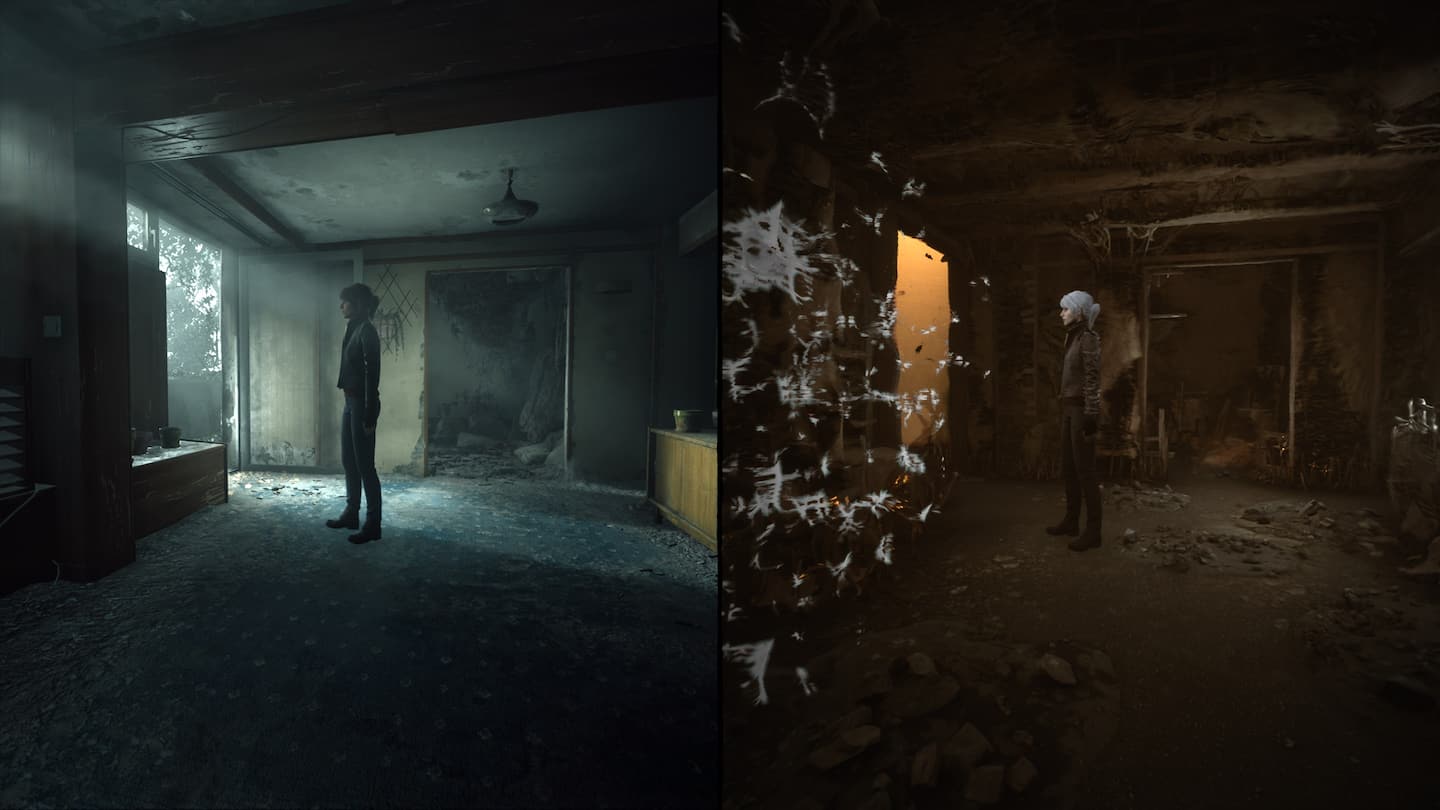‘The Medium’: The real world and spirit world split in this unusually dynamic adventure
[ad_1]
Set in Krakow in 1999, “The Medium” tells the story of Marianne, a woman who can communicate with spirits and travel between the lands of the living and the dead. We are introduced to her during a low point in her life — on the day she visits the funeral home which, until recently, was owned by her beloved foster father Jack. She is there to pin a tie on his corpse. But just as she completes her task in the mortuary, the lights in the room start flickering. Tracking the disturbance upstairs, Marianne hears the door of Jack’s office shut and a sharp sound ring out from inside. Stepping into the office, she finds shards of pottery scattered on the floor, and her reality splits in two.
On the left side of the screen is the Marianne we’ve been following to this point; on the right, in a twilit world, is Marianne’s spirit self. On one side, we see a brunette-haired Marianne talking to herself in Jack’s office while on the other we see a white-haired Marianne addressing Jack’s spirit, sporting a marble death mask, as he frantically searches for a notebook. Shaken, but self-possessed, Marianne helps Jack to understand that the notebook he is looking for is unimportant and it’s all right for him to pass over to the other side.
Following Jack’s departure Marianne finds herself whole again and in his old office when the phone rings. Upon answering she is greeted by an unknown man. Radiating tension, he introduces himself as Thomas and tells her that he knows about the dream that has plagued her throughout her life. At a loss for time, he entreats her to meet him at the Niwa Resort where he promises answers to her questions.
Heeding her instincts, Marianne decides to go to the Niwa, an abandoned, government-run resort intended to showcase the triumphs of twentieth-century communism — a workers’ playground if you will. As she approaches the building she is unsettled by its aura. Her subsequent exploration of it, as well as its vast underground structure, uncovers a tangled history — e.g. parts of the facility were once used by the Nazis.
As players explore the Niwa and its environs, Marianne’s reality will fracture when she comes across areas haunted by traumatized spirits she can help, or a malignant spirit who means her harm. During these moments, players will have to pay attention to both the material and the spirit world to solve puzzles or escape from danger, as different clues appear in each. In the spirit world, Marianne can draw energy from departed souls which she can use to cloak herself in a shield to ward off flying adversaries known as spirit moths. She can also use a “spirit blast” to defend herself against a more formidable enemy whose identity isn’t revealed until late in the game.
Things affected in one world have repercussions in the other. Often, real-world Marianne will come across devices that lack electrical power. To remedy such issues she’ll have to hunt around for the spirit-world counterpart to, say, an elevator or a fuse box which can be activated with a spirit blast. Moreover, while straddling both worlds, Marianne will sometimes come across a passageway that is blocked in the material world but unobstructed in the spirit world. With the press of a button, she can leave her material incarnation to explore areas that are otherwise cut off from her real-world self. I loved the way these mechanics worked together to create an unusually dynamic adventure.
The real strength of “The Medium” is the novel way it uses split-screen gameplay to tell a single-player story. Numerous video games have used split-screens for multiplayer in the past, but “The Medium” is the first one I know of which extensively uses the technique for a single-player tale. Scenes are split along vertical and horizontal axes and it’s not unusual for the separate halves to focus on different facets of their corresponding environments. As a result, “The Medium” is a game with a rich visual vocabulary. This style reinforces the idea that the game can be read as a parable for a land soaked in history. After all, anyone who has walked through an old city has probably entertained thoughts of what it was like to pass through the area in bygone days and Marianne is a vessel for a past that refuses to stay mum.
Although “The Medium” is billed as a psychological horror game, I found it to be consistently unsettling rather than scary. There is a vengeful monster that Marianne must deal with intermittently, but except for one breathtaking scene where he chases her through different realities — resulting in shifts in perspective that strike like tidal waves — I didn’t think much of him. Nothing robs a creepy game of its power as forcing a player to confront the same monster too many times so, thankfully, the monster encounters are nicely spread out. “The Medium” might not have the most nightmarish adversary but its blanketing, foreboding atmosphere and uncompromising ending amply makes up for it.
Christopher Byrd is a Brooklyn-based writer. His work has appeared in the New York Times Book Review, the New Yorker and elsewhere. Follow him on Twitter @Chris_Byrd.
